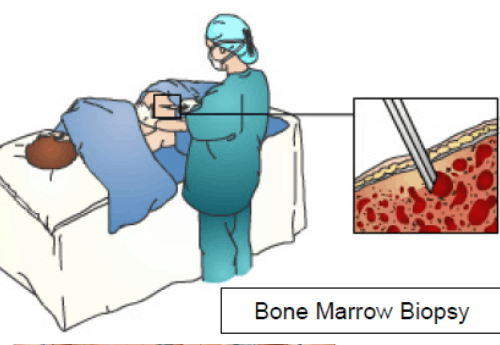Lymphoma is a cancer of the lymphocytes, a type of white blood cell. When lymphocytes become cancerous, or malignant, they multiply and become tumors.
Lymphocytes are normally found in the blood stream and lymph nodes. Lymph nodes are found throughout the body and are identified by their location. They are a part of the body’s immune system, which includes the lymphatic system, spleen, and lymphocytes

What are the types of Lymphoma?
Lymphoma encompasses 2 large groups of neoplasms, namely
- Non-Hodgkin lymphoma (NHL)
- Hodgkin disease.
Non Hodgkin’s Lymphoma
There are more than 30 different types of NHL. The specific types of NHL are associated withdifferent symptoms.
- Low-grade, or indolent, NHL is usually associated with painless swelling of lymph nodes (usually in the neck or over the collarbone), but patients are otherwise healthy.
- Aggressive NHL is associated with more symptoms than low-grade NHL and grows more rapidly. There may be pain or swelling in the legs, neck, arms, or abdomen. Fever, night sweats,and unexplained weight loss may also occur.
- Very aggressive (High-grade) NHL is associated with many different symptoms, depending on the location of the cancer. Symptoms can include:
- Fatigue
- Shortness of breath
- Pain
- Weakness in the arms and/or legs
- Confusion
High-grade Lymphomas grow very rapidly.
Hodgkin’s Lymphoma
This type of lymphoma looks a lot like NHL, but there are some differences. People with HL have abnormal cells called Reed-Sternberg (R-S cells). HL is also different because it spreads in a more orderly manner than NHL. There are two main types of Hodgkin lymphoma
- Classical
- Nodular lymphocyte-predominant.
What is cancer staging and what does it mean?
After the type of Lymphoma has been identified, your doctor will order special tests to determineif your cancer has spread in your body and if so, how much. This is known as a “staging”.Staging is important since it helps to predict outcome or prognosis and determines the treatmentapproach.
- Stage I (early stage): One lymph node region is involved.
- Stage II (locally advanced disease): The cancer is found in two or more lymph regions on
one side of the diaphragm.
- Stage III (advanced disease): The disease involves lymph nodes both above and below thediaphragm or one node area and one organ on opposite sides of the diaphragm.
- Stage IV (widespread disease): The Lymphoma is outside the lymph nodes and spleen andhas spread to one or more organs such as bone, bone marrow, skin, and other organs.
After the stage, lymphoma is again divided into “A,” “B,” or “E” categories depending on the type of symptom :
- A: no symptoms.
- B: symptoms may include: fever, chills, night sweats, itching, and weight loss.
- E: your lymphoma has spread from a lymph node directly to an organ.
What are the common tests used to evaluate Lymphoma?
- Biopsy: A piece of tissue from an area on the body where the cancer may be is removed and sent to apathologist for examination under a microscope. The information provided by this tissue sample is important to the diagnosis and treatment of lymphoma.
- X-Ray: Radiation to take pictures of an area inside the body.
- Computerized Axial Tomography (CT) scan: A CT Scan takes x-rays from different angles around the body. The pictures are then combinedusing a computer to give a detailed image. The most common CT scans taken are the neck, chest,abdomen, and/or pelvis.
- Positron Emission Tomography (PET) scan: E.T. images provide information about how tissue functions.
- Magnetic Resonance Imaging (MRI):MRI is similar to a CT scan but uses magnets and radio frequency waves instead of x-rays.
- Blood Tests:These are performed to determine if the different types of blood cells are normal in numbers andappearance and if blood chemistry is normal.
- Bone Marrow Aspiration and Biopsy:Bone marrow, the spongy material found inside the bones, contains immature cells called stemcells. The stem cells develop into blood cells. Bone marrow is obtained by numbing the skin,tissue and surface of the bone with a local anesthetic. A thin needle is inserted into the hip oranother large bone and a small sample is collected.

- Echocardiogram: This diagnostic test is ordered to evaluate the size and function of the heart.
- MUGA Scan (Multiple Gated Acquisition Scan):This scan is an extremely useful test for assessing the function of the heart.
Lymphoma Treatment
The Lymphoma treatments include:
Biologic Therapy
This treatment increases body’s natural ability to fight cancer. It does this by giving a boost to immune system. There are several kinds of biologic therapy:
- Monoclonal Antibodies: These are drugs like Rituximab, which directly target lymphoma cells and do not harm normal cells.These drugs are sometimes called “smart drugs” or “guided missiles” because they know exactly where to go in your body.
- Radioimmunotherapy: These are therapies like Ibritumomab tiuxetan, Iodine (131I) tositumomab which have a radioisotope attached to them Radioimmunotherapy (RIT) uses an antibody labeled with a radionuclide to deliver cytotoxic radiation to a target cell.
- Interleukin 2: This is a medicine that activates the immune system so that it can kill cancer cells.
Chemotherapy
Chemotherapy is the use of drugsto treat cancer. There are many different types of drugs available to treat Lymphomas. Doctors may prescribe a single drug but more often combinationsof drugs are used. Chemotherapy drugs have varying ways of killing cancer cells and differentside effects. Giving several drugs at once may increase their effectiveness but also may increasethe number of side effects. Decreased Blood Cell Production resulting in less than normal red blood cells (anemia), white blood cells (leukopenia), and platelets (thrombocytopenia), diarrhea, fatigue, weight loss, mouth sores, nausea, vomiting and sterility are the side effects.
Radiation Therapy
Radiation is a special kind of energy carried by waves or a stream of energy particles. It may be delivered by a radiation machine or by radioactive substances injected into the bloodstream. External beam radiation equipment is used to aim the radiation at tumors or areas of the body where cancer is found. Cells in the area where the radiation beam was aimed are killed.
Bone Marrow and Stem Cell Transplantation
Autologous or allogeneic bone marrow transplantion (BMT) and peripheral blood stem celltransplantation (PBSCT) are procedures that restore the supply of normal cells when these cellshave been destroyed by high-dose chemotherapy and/or radiation therapy. In autologous transplantation, the bone marrow or blood stem cells are collected from the patient. In allogeneictransplantation, the bone marrow or blood stem cells are collected from a matched donor, whomay be a related or unrelated (non-family) individual.
In bone marrow transplantation, stem cells are taken from the donor or patient’s hip bone. Inperipheral blood stem cell transplantation, the cells are collected from the blood using a procedure called pheresis, which is similar to donating blood. Before the transplant procedure,patients receive high doses of chemotherapy, alone or in combination with radiation, to destroyas many cancer cells as possible. They then receive the bone marrow or stem cell transplant.Bone marrow collection for transplants is very seldom done. Instead, peripheral stem cellcollection is used most often to collect stem cells.
Watchful Waiting
This means that patient does not have to get any active treatment now. But, you may need to get treatments later, if tests show that your cancer is growing. Watchful waiting is usually recommended only for people with slow-growing lymphomas.





